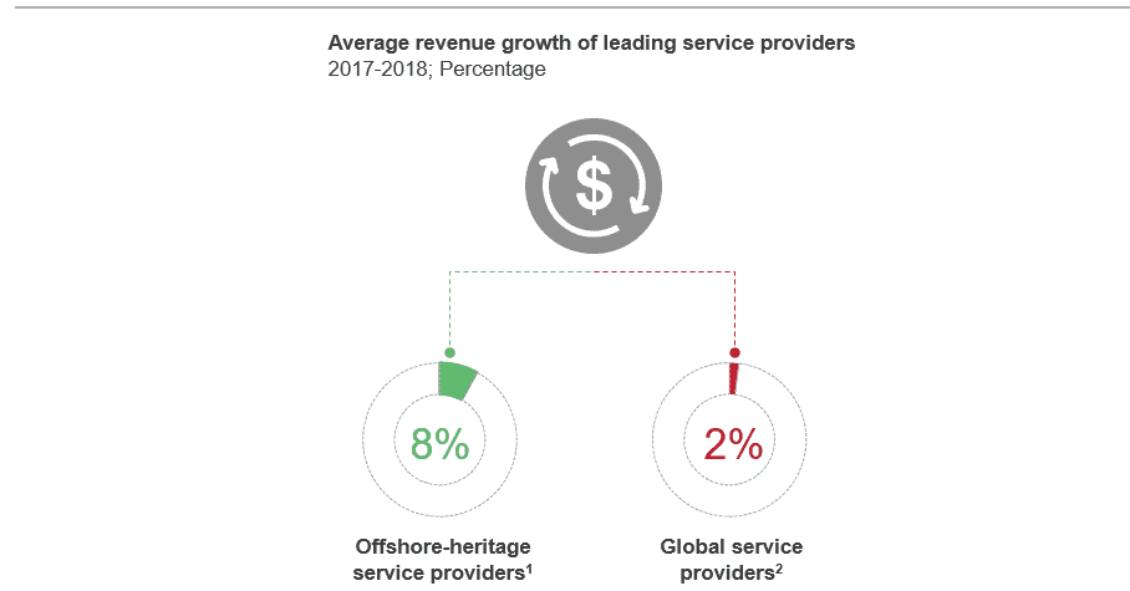
Enterprises are increasingly embracing DevOps to enhance their business performance by accelerating their software time-to-market. In principle, DevOps covers the entire spectrum of Software Development Life Cycle, SDLC, activities from design through operation. But, in practice, only ~ 20 percent of enterprises are leveraging DevOps end-to-end, according to our recent research, DevOps Services PEAK Matrix™ Assessment and Market Trends 2019 – Siloed DevOps is No DevOps!

That means the remaining ~ 80 percent that are taking a siloed approach to DevOps are missing out on the many types of values it can deliver.
Types of DevOps fragmentation
Instead of adopting DevOps in its intended end-to-end fashion, many enterprises in different verticals and at different stages of maturity are tailoring it to focus on siloed, distinct portions of the SDLC. The most common types of fragmentation are: 1) Apps DevOps, applying DevOps principles only across the application development cycle; 2) Test Ops, using DevOps principles in testing; and 3) Infra Ops, applying DevOps principles only to infrastructure.
Why fragmentation delivers minimal value
Pocketed adoption makes it tough to realize the full value that DevOps can deliver. The primary reason is bottlenecks. First, workflow throughout the SDLC is impeded when DevOps principles and automation are only applied to certain phases of it. Second, lack of end-to-end adoption makes it more difficult for enterprises to gain a full view of their applications portfolio, spot bottlenecks, incorporate stakeholder feedback in real-time, and make the entire process more efficient.
Additionally, when DevOps is used in a siloed manner, it focuses primarily on increasing the technical efficiency of processes. This means that DevOps’ ability to support the enterprise’s broader business-oriented objectives is severely restricted.
Finally, fragmented DevOps adoption creates a disintegrated culture in which teams work independently of each other, in turn leading to further conflicts, dependencies, and stretched timelines. All this, of course, defeats DevOps’ main purpose.
Moving to end-to-end DevOps adoption
To successfully adopt DevOps end-to-end, enterprises should place automation, culture, and infrastructure at the heart of their strategy.

- Automation: Automating various elements of the SDLC is extremely beneficial; doing so helps reduce implementation timelines and increase team productivity by standardizing processes and diminishing the scope of errors
- Culture: A collaborative culture is essential to a successful DevOps implementation as it involves the development, operations, and business teams working together in an iterative fashion to achieve cross-team and business-oriented KPIs
- Infrastructure: Increasing adoption of cloud-native technologies like as infra-as-code, microservices, serverless, and containers helps maintain configuration consistency in deployment, eventually leads to an increase in developer productivity, and saves on cloud computing costs.
DevOps has the ability to deliver significant value to enterprises. But implementing it in a siloed manner quickly dilutes a lot of that potential value. To realize all DevOps’ benefits, enterprises should implement it end-to-end, invest in automation, robust and modular infrastructure, and tools and technologies to ensure agility, and develop a culture that helps them improve cross-team collaboration.
What has been your experience in your DevOps adoption journey? Please share with us at [email protected] and [email protected].










